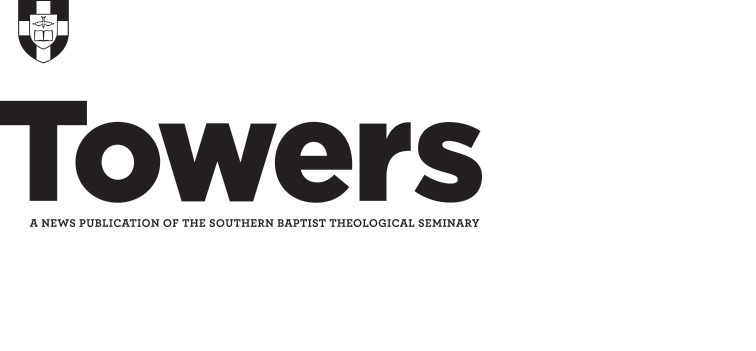When John R. Sampey was named president of Southern Seminary in 1929, he inherited a brand new Lexington Road campus with $992,000 in related debt (about $13 million in today’s money).1 Only a few months later, a stock market crash initiated the Great Depression. Fortunately for the seminary and the denomination, Sampey was a capable fundraiser, and he became the first SBTS president to use recorded media to spread his message.
Initially, Sampey made shrewd business decisions to reduce the debt, such as selling and leasing parts of the old downtown campus and canceling proposed construction projects on the new campus.
In 1933, he became an advocate for a denomination-wide campaign called the Hundred Thousand Club, which sought 100,000 Baptists to pledge $1 a month to the Southern Baptist Convention, with 10 percent going to the seminary. Sampey himself gave $10 a month to the campaign for over eight years.
In 1935, as part of an effort to endow the Chair of Old Testament Interpretation, Sampey recorded a special message on a 78 RPM vinyl record that was distributed with his photograph to pastors and alumni.2 The intention was for the record to be played in churches during Sunday School or prayer meeting. In the recording, Sampey did not just ask for money, he also challenged listeners to devote their lives to Christ, to read Isaiah 40-66 10 times over the next year, and the book of Ephesians 40 times.3 He referred to Isaiah in particular as “the Gospel of the Old Testament,” with its prophecies of the Messiah’s advent and crucifixion. He also said, “It is important that our young preachers should study, under competent teachers, the Old Bible that Jesus loved so much.”
Sampey recorded a follow-up message a year later, at which time he reported that $30,000 had been raised toward the endowment.4 As on the previous record, Sampey encouraged listeners to read the Bible, this time focusing on Acts, the Gospel of John, and the Epistles of John, with particular emphasis on the work of the Holy Spirit.
The endowment, completed in 1938, was named in his honor, and it has continued to fund a lineage of Old Testament professors: James Leo Green, Clyde T. Francisco, John Joseph Owens, Page Kelley, Marvin Tate, Daniel Block, and Duane Garrett.
In 1940, Sampey turned his attention toward raising money for the seminary’s main endowment, with the goal of raising $5 million by the 1959 centennial. To do this, the seminary produced a 27-minute film called “Eternal Investments,” voiced in part by Sampey, scripted by Gaines Dobbins, directed by Allen West and R. Inman Johnson, with music by the seminary choir. The scope of the film is extensive, covering the history of the seminary, showing the buildings and grounds, displaying student life, and explaining the roles of all the teachers. The film includes rare video footage of more than a dozen faculty members, including Hugh Peterson, Leo T. Crismon, W.O. Carver, Gaines Dobbins, James Leo Green, R. Inman Johnson, William Davis, and Sampey himself. Professor James Adams, it was said, “knows almost as much about the Holy Land as did Abraham, or David, or Peter!”5
Sampey’s financial legacy was great, and thanks in part to his voice on vinyl and film, the seminary’s debt had been reduced to $215,000 by the time of his retirement in 1942.
To listen to Sampey’s recordings, visit digital.library.sbts.edu, or learn more about Sampey by visiting the Archives & Special Collections at the James P. Boyce Centennial Library.
Endnotes
1 Gregory A. Wills, The Southern Baptist Theological Seminary 1859-2009 (Oxford University Press, 2009), p. 309.
2 Southern Seminary News, August 1935.
3 John Sampey, “Fund-raising for the endowment of the Chair of Old Testament Interpretation,” 1935, Archives PH 293, http://digital.library.sbts.edu/handle/10392/4924
4 John Sampey, “Fund-raising,” part 2, 1936, Archives PH 18, http://digital.library.sbts.edu/handle/10392/4925
5 Archives MV 5, http://digital.library.sbts.edu/handle/10392/2996




